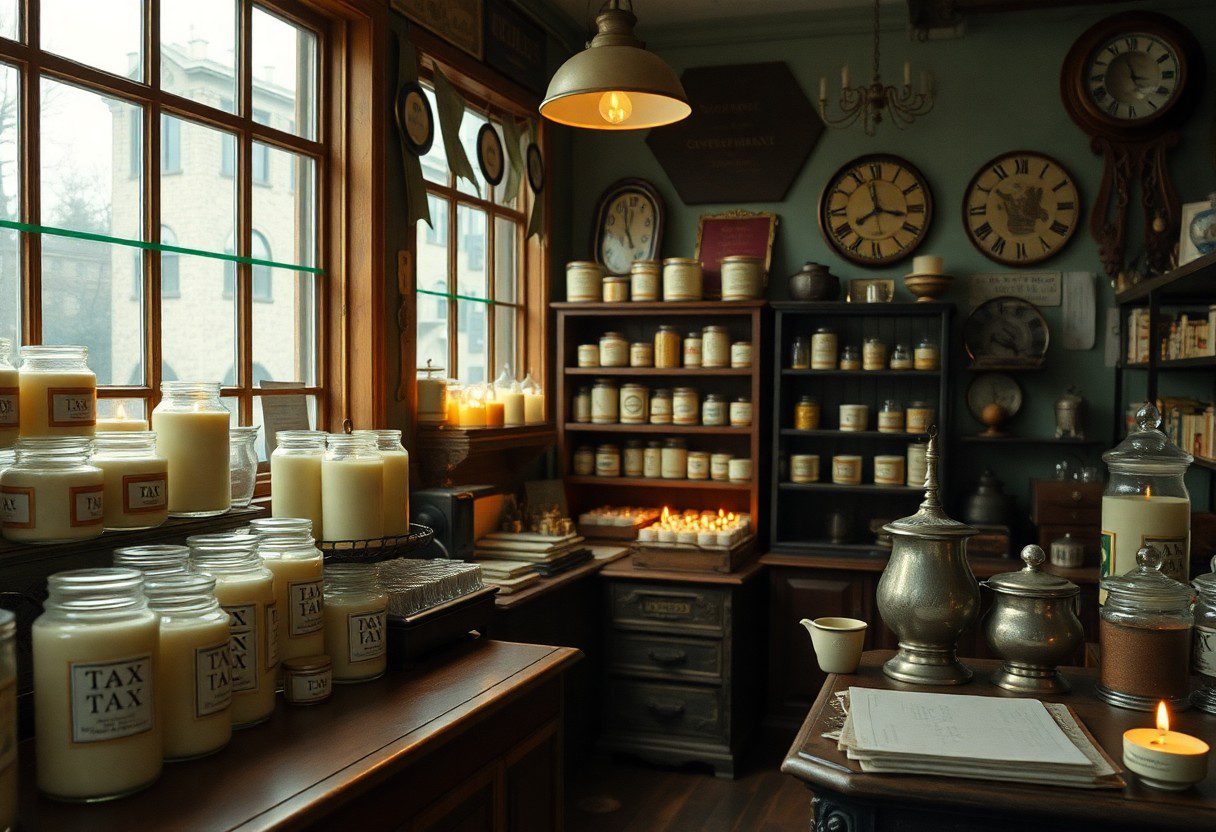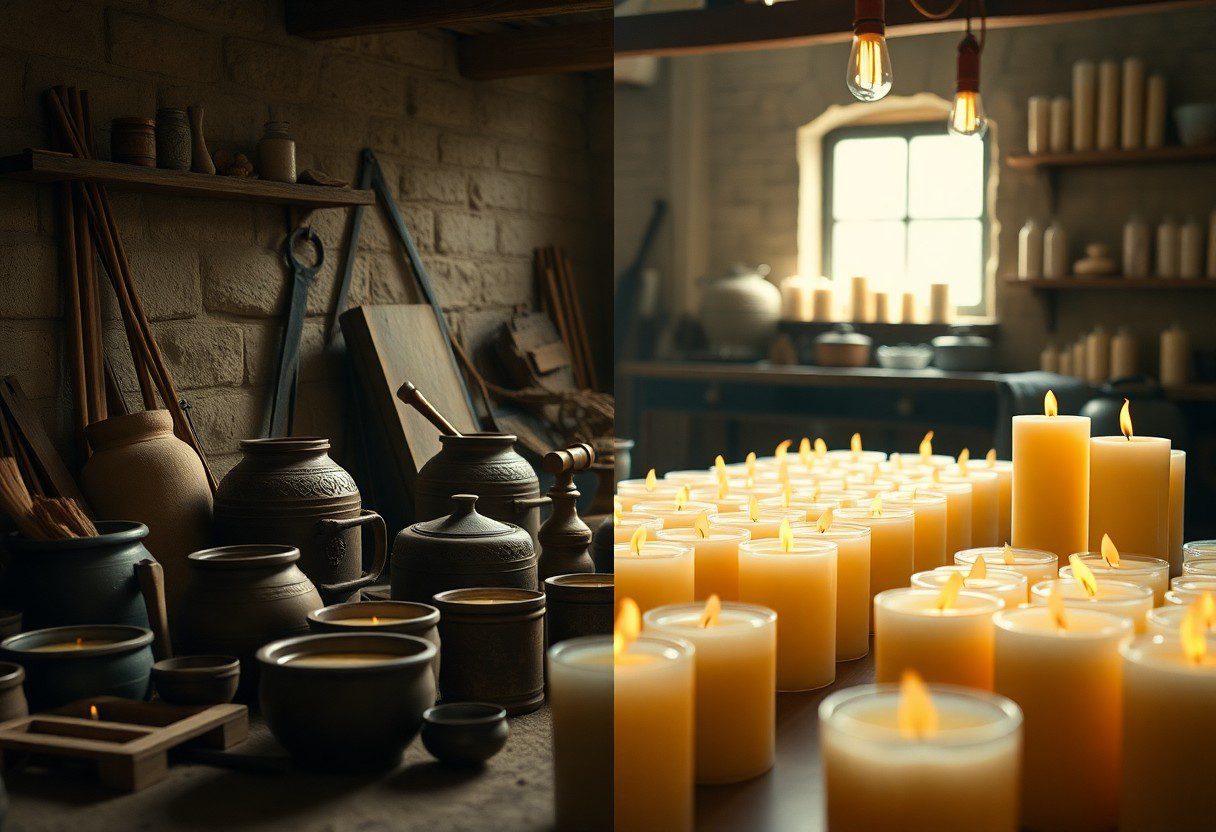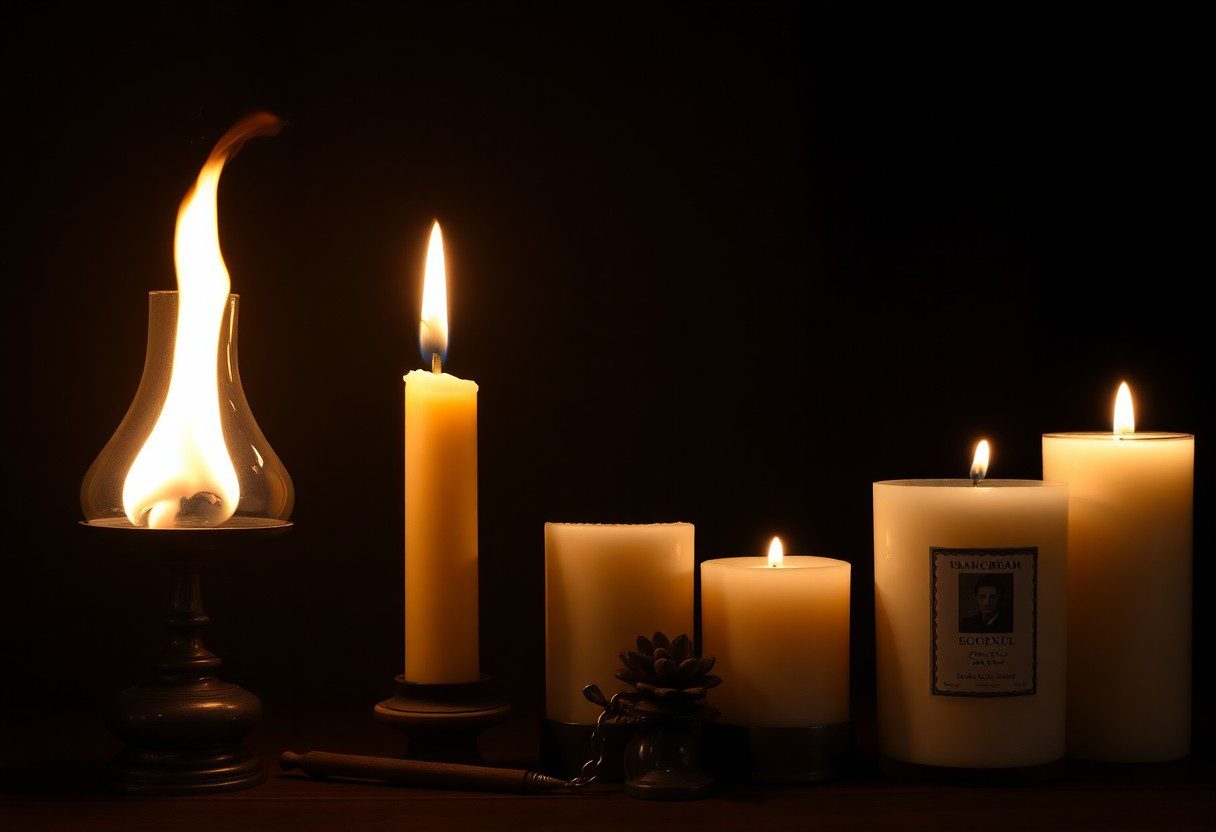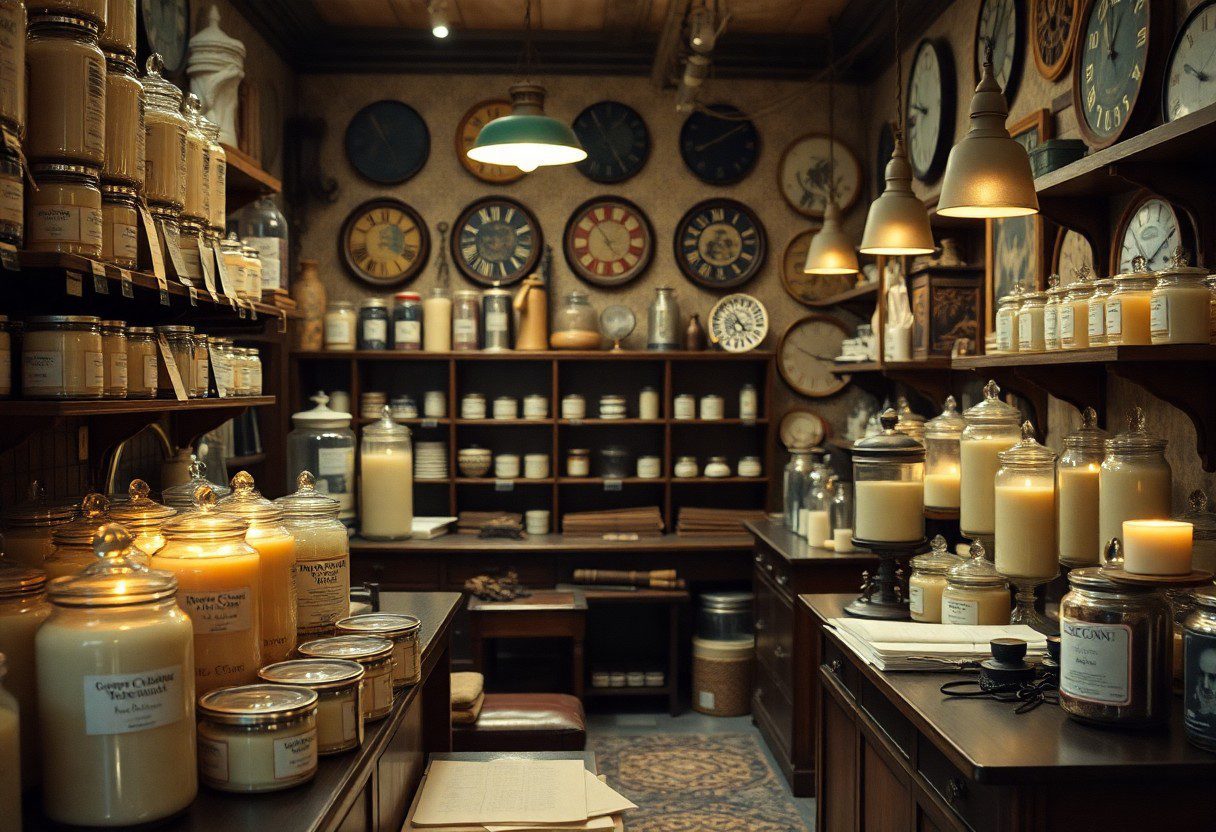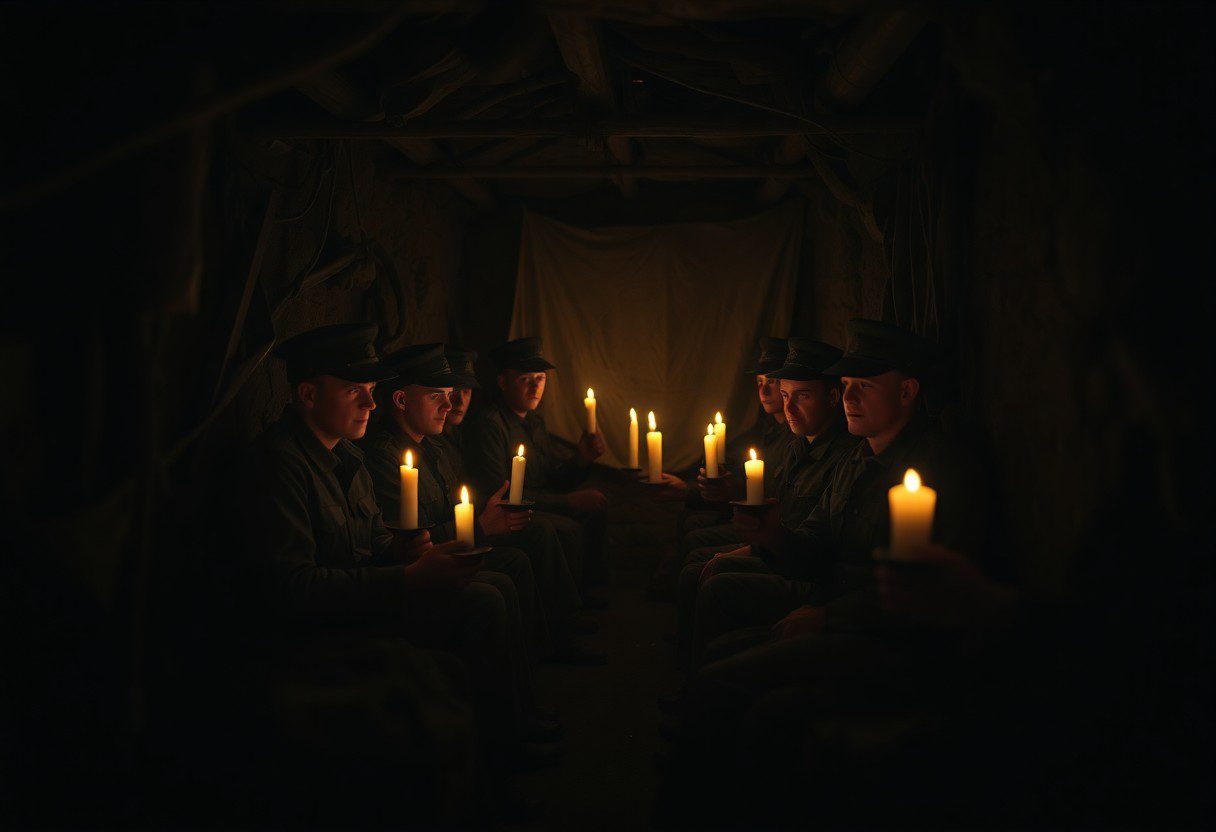Candle Taxes And Regulations – An Unexpected Chapter In Candle History
Just when you thought your love for candles was straightforward, you may be surprised to discover the complex world of taxes and regulations that surrounds them. From ancient times to modern-day legislation, the journey of candles has been not only about light and fragrance but also about governmental oversight and financial implications. As you investigate into this unexpected chapter, you’ll find that understanding these frameworks can shape your appreciation and choices in the vibrant candle market while navigating potential legal liabilities and opportunities.
Historical Overview of Candle Taxation
For centuries, candles have played an imperative role in everyday life, illuminating homes and serving as symbols of ritual and celebration. However, their significance extends beyond mere functionality, evidenced by the emergence of taxation regulations surrounding their production and sale. Throughout history, you may find it intriguing how governments have viewed candle-making as not just an artisanal craft, but also a source of revenue. Understanding the evolution of candle taxation reflects broader trends in economic management and control, as you explore into the fascinating timeline of policies governing this deceptively simple commodity.
Early Candle Tax Legislation
Candle taxation can be traced back to the Middle Ages, when governments began recognizing the potential for generating income through levies on everyday goods. Initially, you could find taxes imposed based on the number of candles a household owned or the amount produced by local candle makers. These early laws often aimed to fund public projects or defense initiatives, and such taxation reinforced the importance of candles in daily life. Over time, you might notice how these regulations evolved into more systematic practices, eventually leading to more widespread and organized taxation codes specifically addressing candle manufacturing and sales.
The Impact of Taxes on Candle Production
To fully grasp the implications of candle taxation, consider how these legislations influenced the candle-making industry. As taxes increased, many artisans faced challenges that resulted in alterations to production methods, pricing, and even the composition of candles themselves. Higher taxes often led to inflated prices for consumers, which in turn prompted some candle makers to source cheaper materials, impacting the quality and aesthetics of their products. Furthermore, for those operating small businesses, you may find how cumbersome tax regulations stifled innovation, compelling candle makers to either adapt swiftly or risk going out of business altogether.
It is important to note that while taxation posed challenges, it also catalyzed changes in the industry. Economically motivated artisans began to innovate by creating more cost-effective and sustainable materials, which ultimately helped shape modern candle-making practices. Despite some negative impacts, taxes on candles played a role in encouraging greater standardization and quality control as producers navigated the complexities of compliance. You may appreciate the ironic twist—those same taxes that seemed burdensome initially helped refine the craft and elevate it to new levels of artistry.
Modern Candle Regulations
If you think the world of candles is solely about fragrance and aesthetics, it’s time to dive deeper into a realm of regulations you may not be aware of. The candle industry has evolved significantly over the years, bringing with it a series of regulations designed to ensure safety and transparency in the products you choose. These regulations not only protect consumers but also shape the way manufacturers create and market their candles, ensuring that you are buying safe, high-quality products for your home.
Safety Standards and Compliance
Candle manufacturers today are required to adhere to various safety standards that address potential hazards associated with the use of candles. Compliance with regulations such as those from the American National Standards Institute (ANSI) ensures that your candles burn safely, reducing the risk of fire and toxic emissions. As a consumer, you can feel more at ease knowing that manufacturers must pass stringent testing for factors like flame height and burn stability before their products can hit the shelves.
Labeling and Ingredient Disclosure
Candle labeling has become an integral focus of modern regulations, providing you with the necessary information necessary for making informed choices. Labels on candles must disclose ingredients that compose the wax, fragrance, and any additives used in production. This transparency not only helps you identify possible allergens but also empowers you to choose products that align with your values, such as environmentally-friendly components or cruelty-free processes.
Plus, a clear understanding of labeling helps you avoid certain harmful substances found in lower-quality candles, such as paraffin wax, which may release toxic carcinogens when burned. By focusing on candles that provide full ingredient disclosure, you can significantly enhance the safety and quality of your candle experience, ultimately leading to a more enjoyable ambiance in your space without compromising your health or values.
Economic Implications of Candle Taxes
Now, as you investigate deeper into the world of candle taxes, it’s imperative to acknowledge the broad economic implications these taxes can have. The introduction of taxes on candles not only affects you as a consumer, but also has a ripple effect throughout the entire candle production and retail sector. For manufacturers and retailers, this can lead to increased operational costs, which may necessitate the adjustment of pricing strategies to maintain profit margins. The burden of taxation often translates into higher prices for consumers, eliminating the affordability of a beloved household item. For more insights into these fiscal dynamics, be sure to check out Lights out: the history of the Candle Tax – Dec 16, 2022.
Effects on Manufacturers and Retailers
Implications of candle taxes are multifaceted for manufacturers and retailers. You may find that many manufacturers struggle to absorb the additional tax burden, leading them to reconsider supply chains or even cut back production. Retailers, on the other hand, may face a decreased demand for candles as consumers react to rising prices. It’s imperative for those in the candle industry to continuously adapt, ensuring they remain competitive while managing new costs associated with taxation.
Consumer Pricing and Market Trends
Market trends surrounding candle pricing reflect the delicate balance between demand and the pressure of taxation. As taxes increase, you might notice more economical options emerging in the market or perhaps a shift toward more expensive, high-quality brands that justify their price points through unique offerings. This trend can create an opportunity for artisanal candle makers to thrive, catering to a niche market that values quality over quantity.
Due to the tax implications, you may observe an evolution in consumer purchasing behavior, leading to shifts in market dynamics. The potential for increased production costs results in higher retail prices, which could discourage occasional buyers while forging a stronger bond between loyal customers and premium brands. Furthermore, innovative product offerings may emerge, as brands seek to distinguish themselves amidst growing competition. Ultimately, the intertwining of pricing and tax regulations creates an intricate landscape that you, as a consumer, will need to navigate carefully.
Case Studies: Candle Taxes Around the World
Many countries have imposed various taxes and regulations on candles, impacting consumers and manufacturers alike. Understanding these taxes can shed light on how different regions approach the regulation of this seemingly simple product. Below are some notable case studies to consider:
- United States: Certain states impose a sales tax on luxury items, which can include high-end candles. For instance, in California, the sales tax is approximately 7.25%, while cities can add additional taxes.
- United Kingdom: The UK implements a VAT (Value Added Tax) of 20% on both scented and unscented candles, which impacts the final retail price.
- Germany: As part of their environmental regulations, certain waxes used in candles face a tax of €0.10 per kilogram, aimed at reducing waste from paraffin wax candles.
- Australia: In Australia, imported candles are subject to a 10% GST (Goods and Services Tax), which raises concerns about domestic candle manufacturers competing on price.
- Canada: Some provinces, such as Quebec, have adopted a 5% PST (Provincial Sales Tax) on candles, increasing the overall cost for consumers.
Notable Examples from Different Countries
Against this backdrop, examples of candle taxation can effectively illustrate the diversity of global approaches. In the US, the exemption of imperative goods has led to significant debates on whether scented candles should be categorized as luxury items. In contrast, the high VAT in the UK serves as a primary revenue source for local governments but also impacts the affordability of candles among consumers. Countries like Germany enforce taxes aimed at promoting sustainable practices, forcing manufacturers to rethink materials and production methods. These examples highlight how regulatory frameworks vary significantly depending on regional priorities.
Comparisons of Regulatory Approaches
By examining countries with different approaches towards candle taxation, you can identify key trends. The table below offers a clear comparison:
| Country | Tax Type and Rate |
|---|---|
| United States | State Sales Tax (~7.25%) |
| United Kingdom | VAT (20%) |
| Germany | Wax Tax (€0.10/kg) |
| Australia | GST (10%) |
| Canada | PST (5% in some provinces) |
But beyond just tax rates, the underlying philosophies governing these regulations are astonishingly diverse. For instance, some nations prioritize enhancing consumer protection through stringent labeling and taxation policies, while others focus on stimulating local economies by imposing minimal taxes. Understanding these nuances equips you with valuable insights into how your local market operates, potentially influencing your candle purchasing decisions. You might decide to support locally manufactured candles, knowing that the regulations help promote sustainable practices in your country.
Advocacy and Reform Efforts
Groups Promoting Change
On the forefront of your candle taxation and regulation landscape are various advocacy groups that have taken it upon themselves to champion the cause for reform. These groups often consist of small business owners, candle makers, and passionate enthusiasts who see the pressing need for change. You may find organizations dedicated to educating the public about the weight of overregulation on your favorite candles, pushing for more equitable taxation, and advocating for policies that support creativity and entrepreneurship within the candle-making community. Their efforts aim not just at protecting their interests but also ensuring that consumers like you have access to diverse, well-crafted products.
Recent Legislative Developments
Around your local and national legislative floors, important discussions are underway regarding the landscape of candle regulations. These conversations aim to address the appropriate balance between safety standards and the burdens of taxation. You might be interested to know that recent proposals have emerged that seek to streamline compliance requirements for small candle businesses while ensuring that product safety continues to be a top priority. These developments signal potential shifts in policy that could make it easier for artisans to create and sell their candles to consumers like you.
Change is undoubtedly in the air, as lawmakers are increasingly recognizing the importance of supporting small businesses and creative industries like candle making. Recent initiatives have proposed reducing or even eliminating certain excessive tax burdens, which many argue stifle innovation and growth in the sector. This movement is gaining momentum, encouraging a strong call for greater transparency in how candle taxes are implemented and enforced. As these reforms continue to evolve, you have a role to play too—by remaining informed and advocating for policies that resonate with your values as a consumer and supporter of the arts.
Future of Candle Taxes and Regulations
After examining the current landscape of candle taxes and regulations, it’s necessary to consider what the future holds for this vibrant industry. As consumer preferences evolve and sustainability becomes a priority, lawmakers may increasingly focus on creating frameworks that promote environmentally friendly practices. This means you should stay informed about potential shifts in regulations surrounding the materials used in candle making, such as natural wax versus synthetic options. To gain deeper insights into emerging cultural narratives, you might find it interesting to explore resources like The Joy Luck Club, which illustrates how stories shape consumer behavior and regulatory landscapes.
Emerging Trends in Candle Industry
An increasing trend in the candle industry revolves around sustainability and eco-consciousness. You may notice that many brands are now emphasizing the use of natural ingredients and ethical sourcing, which not only attracts environmentally-aware customers but may also lead to different regulatory standards. In addition, consumers are looking for unique experiences with candles, encouraging the market to explore innovative scents and interactive products, further diversifying the industry while navigating new compliance requirements.
Predictions for Legislative Changes
Legislative changes are on the horizon as governments become more responsive to public demand for eco-friendly products. You may see regulations that prioritize biodegradable materials and stricter labeling requirements emerge to ensure transparency for consumers. As a result, staying updated will be vital, as these regulations could impact the pricing and availability of your favorite candles.
Even though such changes may seem daunting, they can also lead to a more responsible industry, enhancing consumer trust. It’s necessary to be on the lookout for proposed rules that might introduce higher taxes for synthetic waxes or incentives for eco-friendly practices. Being aware of these developments allows you to make informed purchasing decisions and advocate for best practices within your community.
Final Words
Presently, as you research deeper into the world of candle making and consumption, you may begin to appreciate the complexities surrounding candle taxes and regulations. These regulations may seem like an unexpected twist in your exploration of candle history, yet they serve as a testament to how far the craft has evolved. By understanding the various laws and tax implications that surround the production and sale of candles, you gain valuable insight into not only the industry itself but also the societal norms and economic factors that shape it. This knowledge equips you to navigate the candle market more effectively, whether you are a hobbyist, a small business owner, or simply a thoughtful consumer.
In summation, you now have a broader perspective on how candle taxes and regulations fit into the larger narrative of candle history. By staying informed about these developments, you can ensure that your practices align with current standards and contribute positively to the community. The journey through candle history is both fascinating and necessary; it highlights the interplay between artistry and regulation. Embracing this information will empower you to make informed decisions in your own candle-making endeavors and foster a deeper appreciation for the craft.
FAQ
Q: What are the main regulations surrounding candle production and sales?
A: The primary regulations for candle production and sales vary by country and often include safety standards, labeling requirements, and taxation. In the United States, the Consumer Product Safety Commission (CPSC) imposes guidelines to ensure candles are safe for use, requiring manufacturers to provide information about the materials used and potential hazards. Additionally, local and state authorities may have specific tax codes related to the sale of candles which can influence pricing and reporting in your business.
Q: How do taxes impact small candle businesses compared to larger manufacturers?
A: Taxes can significantly impact small candle businesses, creating a heavier burden relative to larger manufacturers that benefit from economies of scale. Small businesses may face higher per-unit production costs and may not have the resources to navigate the complexities of tax regulations. Furthermore, small businesses often have less negotiating power concerning tax rates and may struggle to absorb the costs of compliance, which can lead to increased prices for consumers.
Q: Have candle taxes evolved over time, and what historical factors influenced these changes?
A: Yes, candle taxes have evolved significantly over time, primarily due to shifting economic conditions and social norms. Historically, candles were a major source of light before the advent of electricity, leading governments to tax their production and sale as a revenue source. As electric lighting became commonplace, regulations shifted to focus more on safety standards and consumer protection. In recent history, environmental concerns over sourcing materials used in candle production have also led to new regulations regarding sustainability, influencing both taxes and manufacturing processes.

